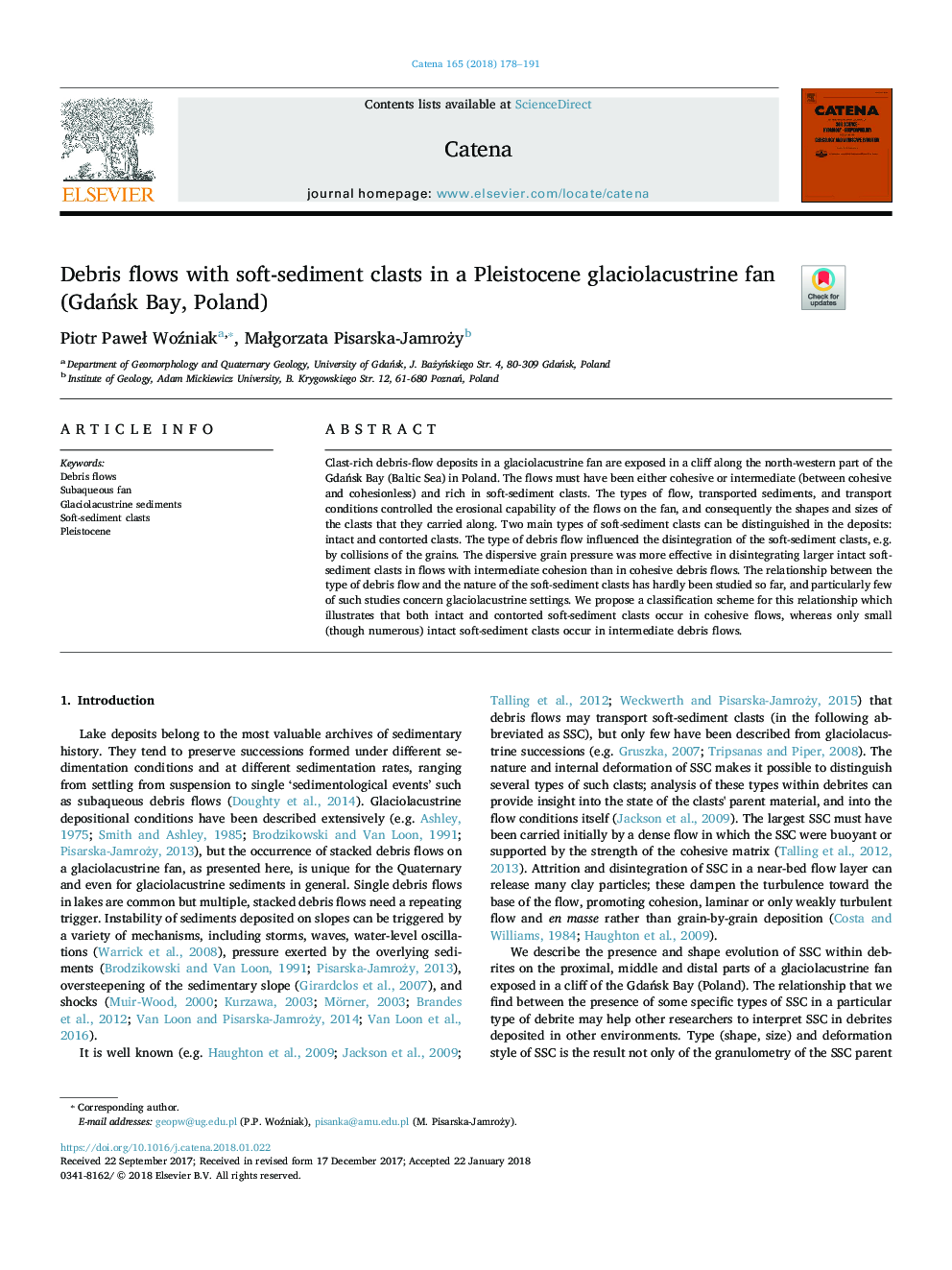| کد مقاله | کد نشریه | سال انتشار | مقاله انگلیسی | نسخه تمام متن |
|---|---|---|---|---|
| 8893584 | 1629189 | 2018 | 14 صفحه PDF | دانلود رایگان |
عنوان انگلیسی مقاله ISI
Debris flows with soft-sediment clasts in a Pleistocene glaciolacustrine fan (GdaÅsk Bay, Poland)
دانلود مقاله + سفارش ترجمه
دانلود مقاله ISI انگلیسی
رایگان برای ایرانیان
موضوعات مرتبط
مهندسی و علوم پایه
علوم زمین و سیارات
فرآیندهای سطح زمین
پیش نمایش صفحه اول مقاله

چکیده انگلیسی
Clast-rich debris-flow deposits in a glaciolacustrine fan are exposed in a cliff along the north-western part of the GdaÅsk Bay (Baltic Sea) in Poland. The flows must have been either cohesive or intermediate (between cohesive and cohesionless) and rich in soft-sediment clasts. The types of flow, transported sediments, and transport conditions controlled the erosional capability of the flows on the fan, and consequently the shapes and sizes of the clasts that they carried along. Two main types of soft-sediment clasts can be distinguished in the deposits: intact and contorted clasts. The type of debris flow influenced the disintegration of the soft-sediment clasts, e.g. by collisions of the grains. The dispersive grain pressure was more effective in disintegrating larger intact soft-sediment clasts in flows with intermediate cohesion than in cohesive debris flows. The relationship between the type of debris flow and the nature of the soft-sediment clasts has hardly been studied so far, and particularly few of such studies concern glaciolacustrine settings. We propose a classification scheme for this relationship which illustrates that both intact and contorted soft-sediment clasts occur in cohesive flows, whereas only small (though numerous) intact soft-sediment clasts occur in intermediate debris flows.
ناشر
Database: Elsevier - ScienceDirect (ساینس دایرکت)
Journal: CATENA - Volume 165, June 2018, Pages 178-191
Journal: CATENA - Volume 165, June 2018, Pages 178-191
نویسندگان
Piotr PaweÅ Woźniak, MaÅgorzata Pisarska-Jamroży,